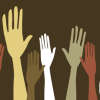 In the time, reputation, and fun hungry modern world, new tools like task outsourcing are emerging to provide these qualities, offering better ways for the invisible hand to meet in your meatsphere neighborhood.
In the time, reputation, and fun hungry modern world, new tools like task outsourcing are emerging to provide these qualities, offering better ways for the invisible hand to meet in your meatsphere neighborhood.
The concept is that the crowdsourcing workplace meets Craig’s list in a local listing service with a reputation economy and badging/leveling up.
At least two startups offer task outsourcing services, TaskRabbit, which has accepted 1,000 reputation-garnering runners into their network to run tasks on demand, and Zaarly, where a consumer names their price for anything and obtains it from people nearby.
It will be interesting to see if there will be crossover in task outsourcing between physical-world tasks and online tasks, whether tools like TaskRabbit and Zaarly could become a 2.0 version of outsourced labor communities like elance, odesk, and 99designs.
Sunday, January 29, 2012
Craigslist 2.0: task outsourcing to local crowd labor
Posted by LaBlogga at 2:49 PM View Comments
Labels: craigslist, crowdsourcing, economics, fungibility, Future of work, labor, meatsphere, reputation economy, social economics, task outsourcing
Sunday, January 22, 2012
Design and the disruptive startup: dynamic pivoting
 In the mashup world of life, business, and web 2.0, spurred on by the Apple-ification of the world (iLife - as a concept not a product), one new idea is applying design to business models, and really by extension, applying design to everything.
In the mashup world of life, business, and web 2.0, spurred on by the Apple-ification of the world (iLife - as a concept not a product), one new idea is applying design to business models, and really by extension, applying design to everything.
Unfortunately, this does not mean as one might think, applying aesthetic principles, conceptually and literally, to business, business models, or any life context, adding beauty to function, and thereby function to function, and questioning the right proportionality of form and function.
Rather, at present applying design to business models means more basically, using design tools and design thinking in a business context, specifically, in the conduct of an iterative prototyping process with users.
In business 1.0, an entrepreneur would dream up an idea and write a business plan. In business 2.0, the claim is that entrepreneurs should interview dozens of potential customers to pivot through value propositions for ideas that solve the biggest customer pain points. Customer acquisition is tantamount, in a 'get, keep, grow' cycle. Elliptical tools like the business model canvas are proposed as support for this iterative prototyping process.
Posted by LaBlogga at 10:50 AM View Comments
Labels: aesthetics, business 2.0, business model, customer interaction, design, entrepreneur, pivot, startup, value, value proposition
Sunday, January 15, 2012
Terahertz information compression era
 Information compression eras is an important area of futuretech: the progression from analog to digital and the developing friction for the next era.
Information compression eras is an important area of futuretech: the progression from analog to digital and the developing friction for the next era.
Analog and digital are modes of modulating information onto the electromagnetic spectrum with increasing efficacy.
The next era could be characterized by the even greater effectiveness of electromagnetic spectrum control, particularly moving to multidimensional attribute modulation. Already DNA is a potential alternative encoding system with four and maybe eight combinations instead of the 1s and 0s of the digital era. Terahertz networking (Clariphy, Aurrion) and data provenance are early guides in the progress to the next node of information compression.
Excerpted from: "Reality: analog, digital, or information compression continuum?"
Posted by LaBlogga at 8:44 PM View Comments
Labels: analog, data, data provenance, digital, futuretech, information compression, information theory, terahertz
Sunday, January 08, 2012
Personal social CRM
 The new social CRM (customer relationship management) is personal social CRM. Social CRM is when businesses try to access the social network interactions of their customers for the purpose of extending business relationships. An example would be a customer tweeting something about a product, which a customer advocate notices and posts in the company’s online help forum. The company’s marketing staff is flagged and then responds by retweeting or other appropriate measures.
The new social CRM (customer relationship management) is personal social CRM. Social CRM is when businesses try to access the social network interactions of their customers for the purpose of extending business relationships. An example would be a customer tweeting something about a product, which a customer advocate notices and posts in the company’s online help forum. The company’s marketing staff is flagged and then responds by retweeting or other appropriate measures.
Personal social CRM is applying these corporate social CRM principles to managing interactions within one’s own social network. The latest websites for personal social CRM include Nimble and Contactually; other somewhat similar tools include Rapportive and Highrise. Nimble and Contactually attempt to show who is important in personal email networks through algorithms that count interaction frequency, length of time for response, and CCs versus direct interactions. Presumably future algorithms could include other influence variables like social ‘klout.’
One de facto and perhaps more useful functionality aspect of personal social CRM sites is that they are essentially a web-based API for social networks like LinkedIn. Different kinds of searches, sorting and management of contacts, for example with context tagging, are available with these tools. This could allow a new way to interact with a greater number of people more effectively.
Posted by LaBlogga at 11:53 PM View Comments
Labels: contact management, CRM, email management, personal CRM, social CRM, Social network
Sunday, January 01, 2012
Top 10 technology trends for 2012
 1. Mobile is the platform: smartphone apps & device proliferation
1. Mobile is the platform: smartphone apps & device proliferation
2. Cloud computing: big data era, hadoop, noSQL, machine learning
3. Gamification of behavior and content generation
4. Mobile payments and incentives (e.g.; Amex meets FourSquare)
5. Life by Siri, Skyvi, etc. intelligent software assistants
6. Happiness 2.0 and social intelligence: mindfulness, calming tech, and empathy building
7. Social graph prominence in search (e,g.; music, games, news, shopping)
8. Mobile health and quantified self-tracking devices: towards a continuous personal information climate
9. Analytics, data mining, algorithms, automation, robotics
10. Cloud culture: life imitates computing (e.g.; Occupy, Arab Spring)
Further out - Gesture-based computing, Home automation IF sensors, WiFi thermostat, Enterprise social networks
Is it ever coming? - Cure for the common cold, Driverless cars
Looking back at Predictions for 2011: right or wrong?
- Right: Mobile is the platform, Device proliferation, Big data explosion, Group shopping
- On the cusp: Crowdsourced labor, Quantified self tracking gadgets and app, Connected media and on-demand streaming video
- Not yet: Sentiment engines, 3-D printing, Real-time economics
Posted by LaBlogga at 11:10 AM View Comments
Labels: 2012, apps, blippy, computing, connected media, device, LBS, microlabor, mobile, prediction, sentiment engine, sentiment prediction, social shopping, supercomputing, technology, top 10, trends










 Email me
Email me Twitter
Twitter MS Futures Group
MS Futures Group Data Visualization Wiki
Data Visualization Wiki Economic Fallacies
Economic Fallacies
